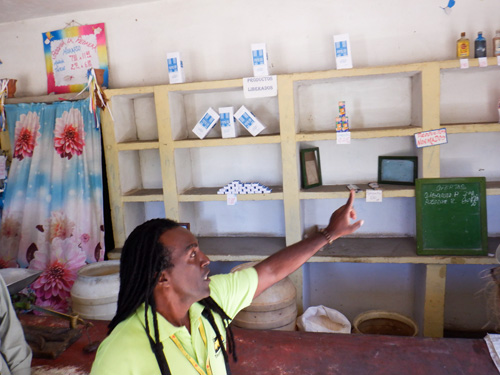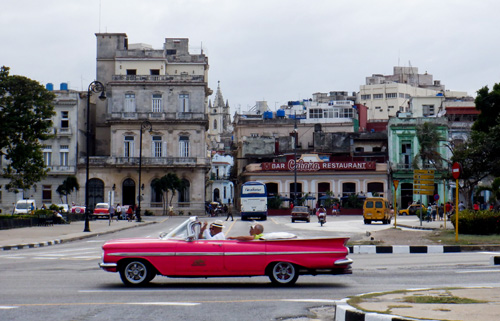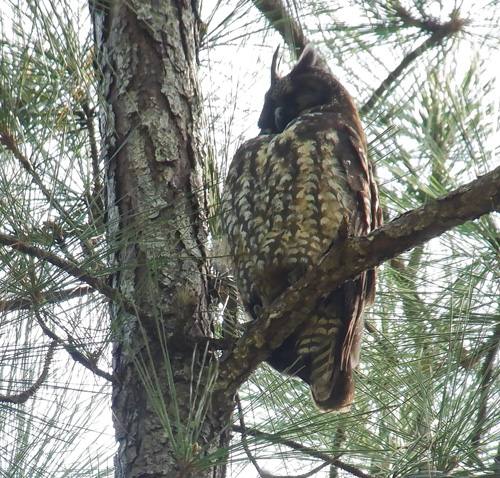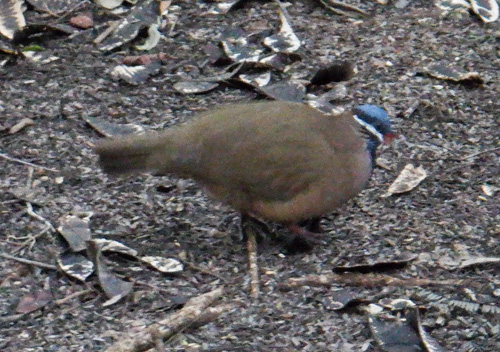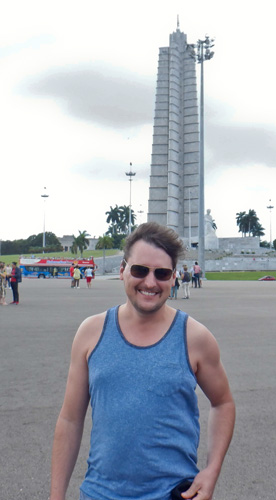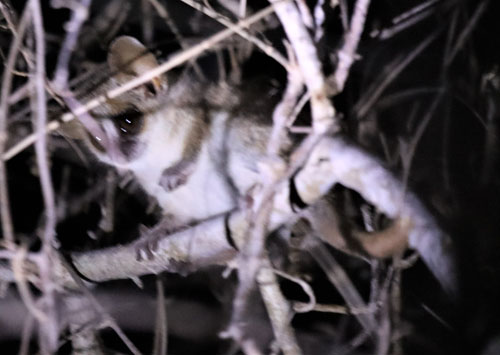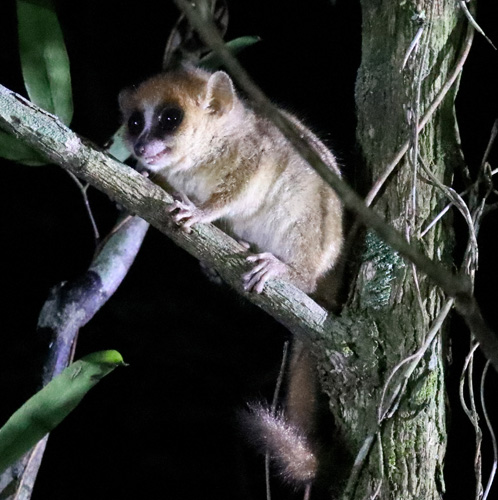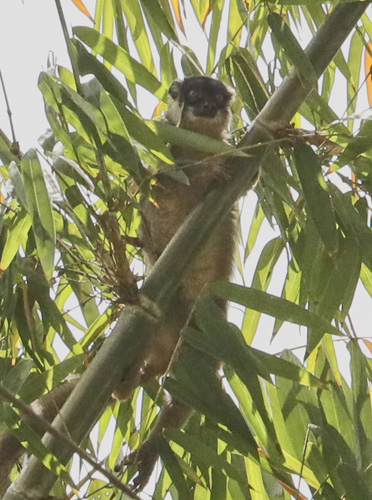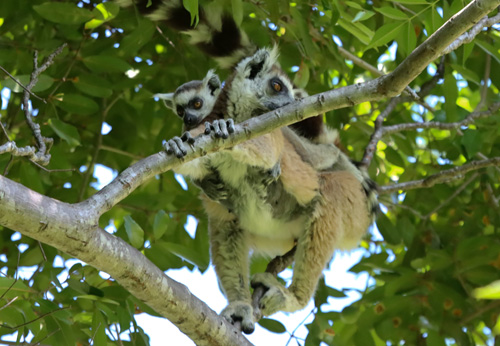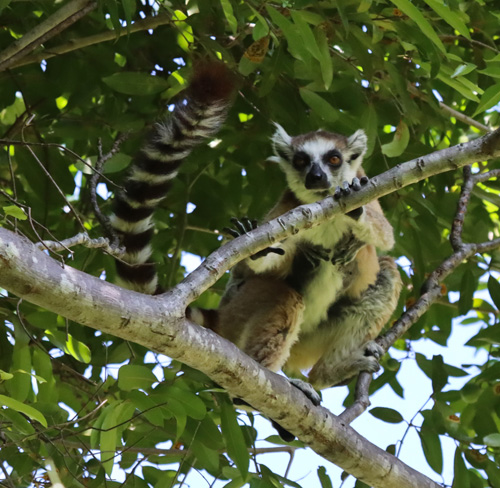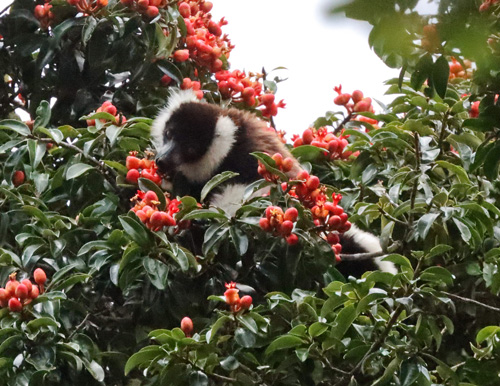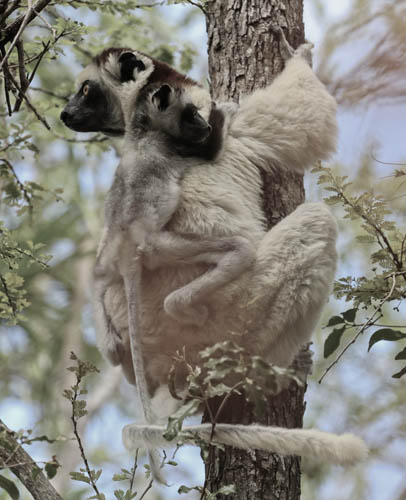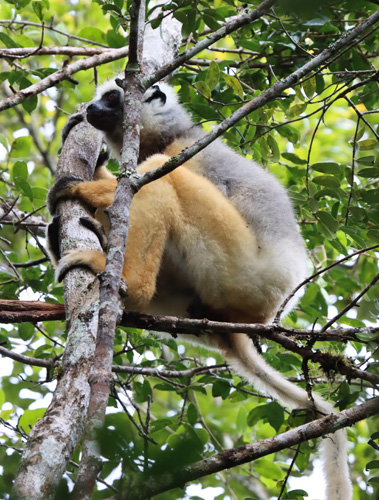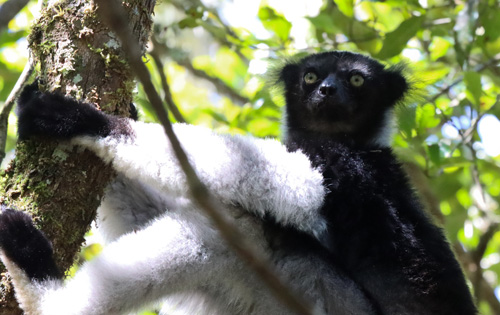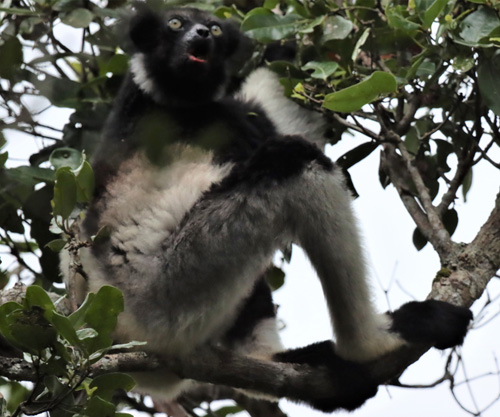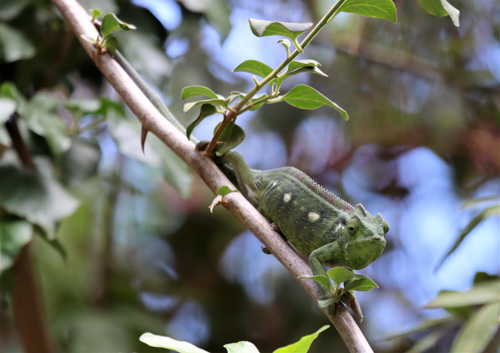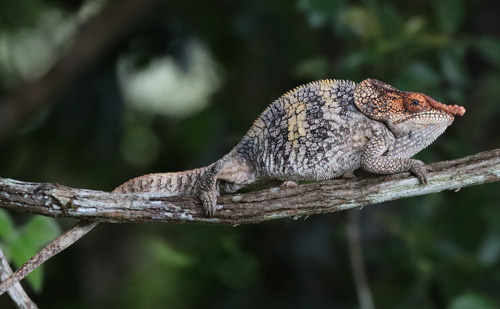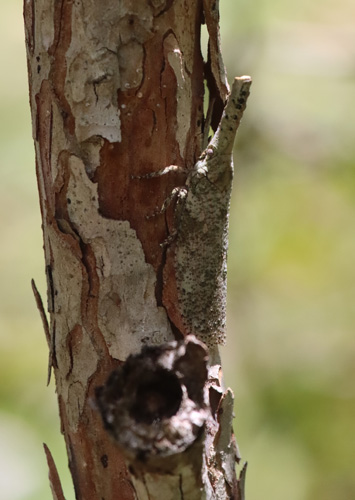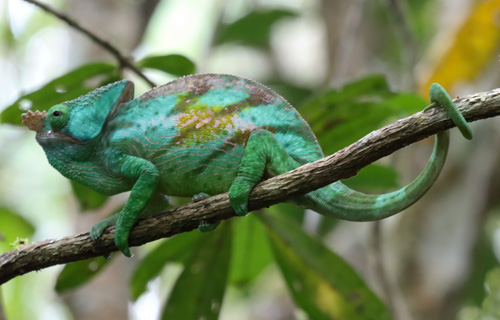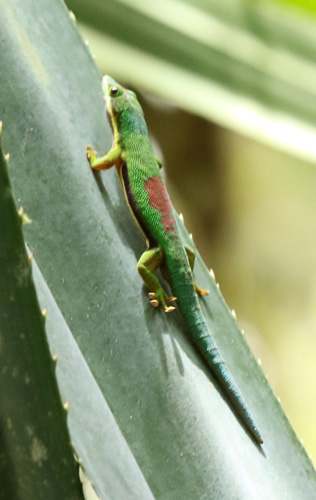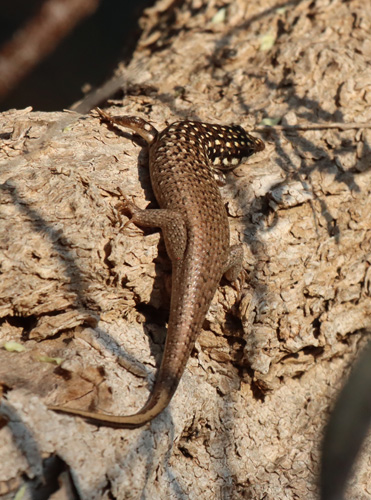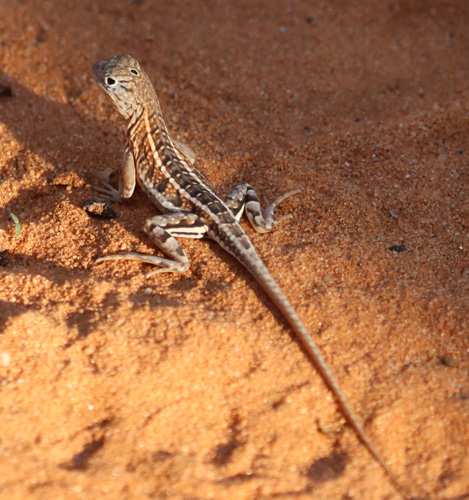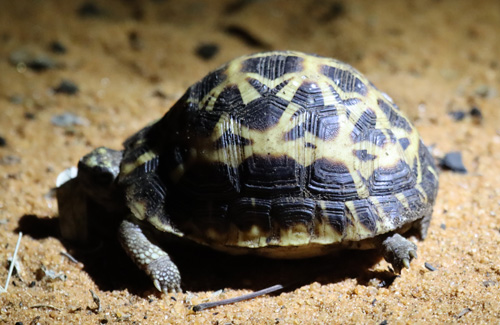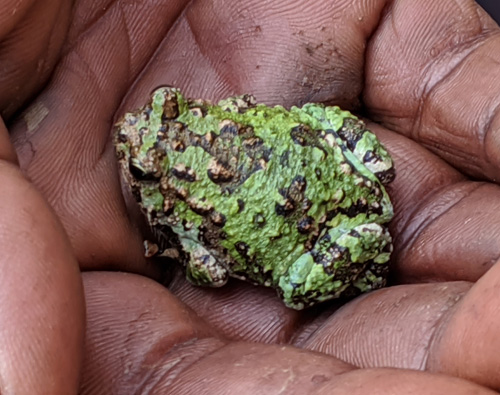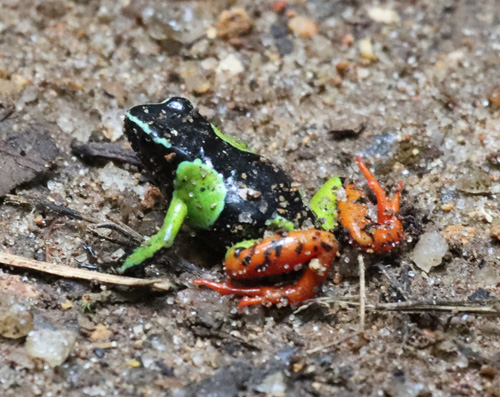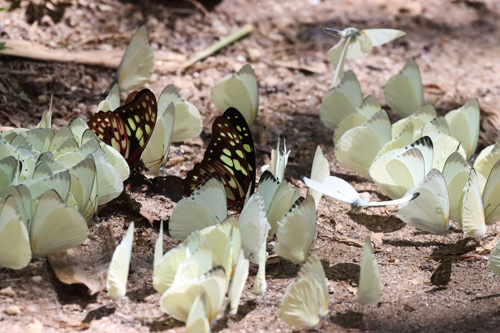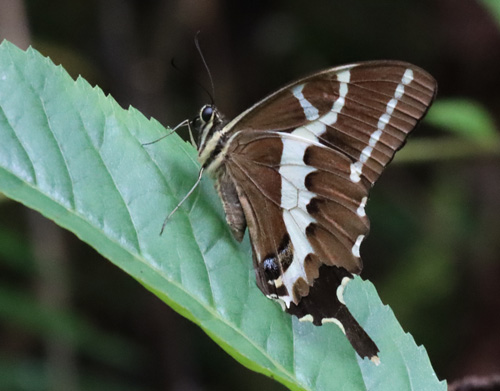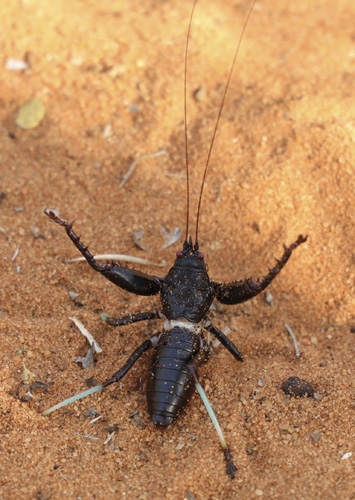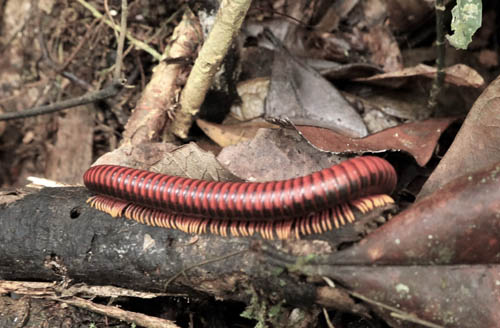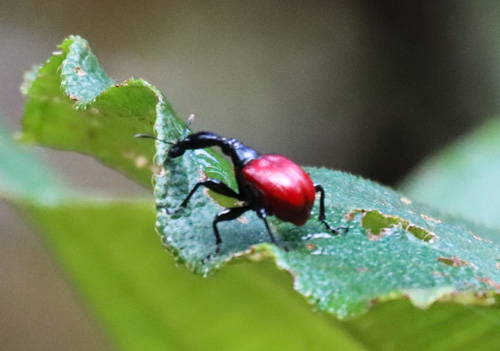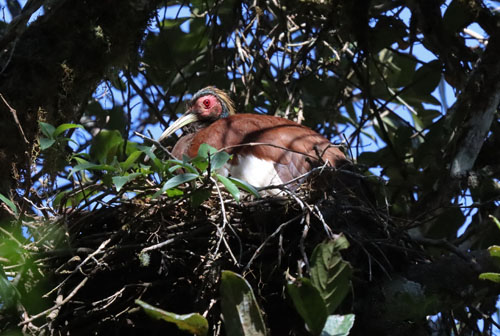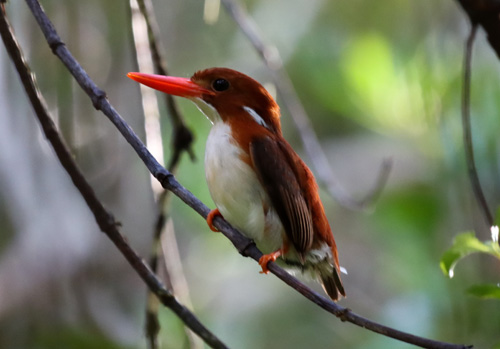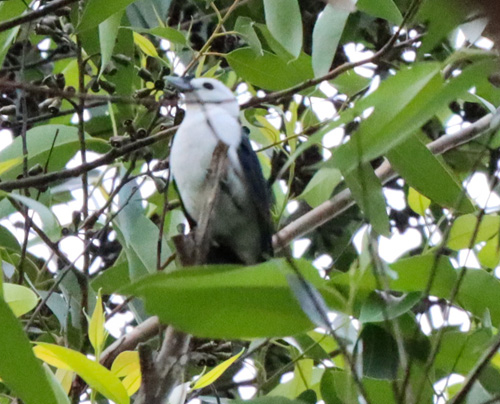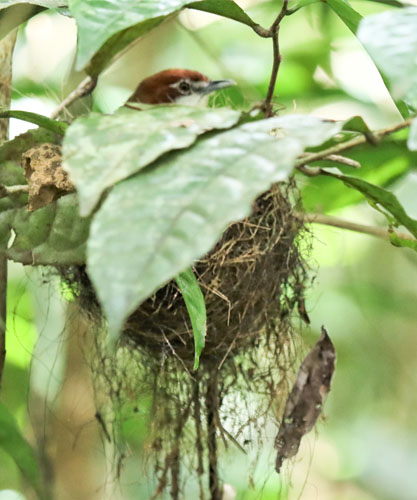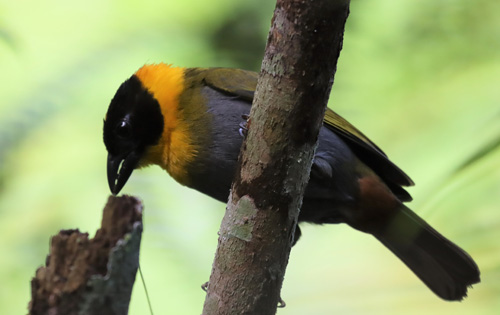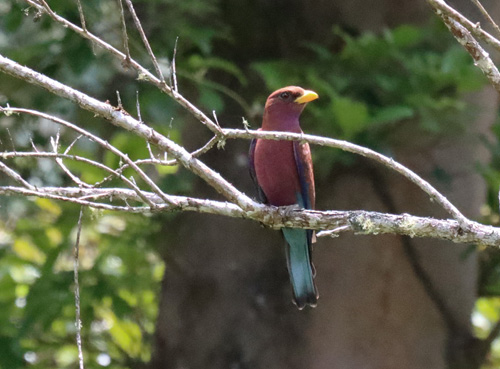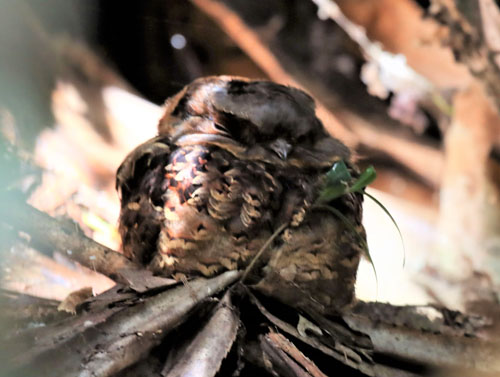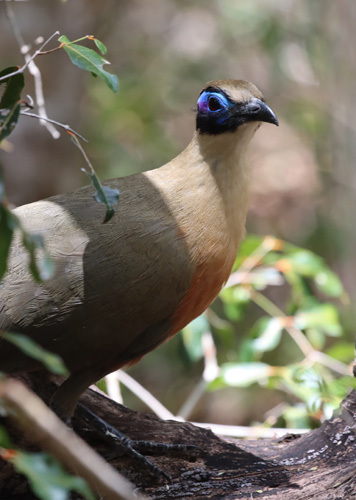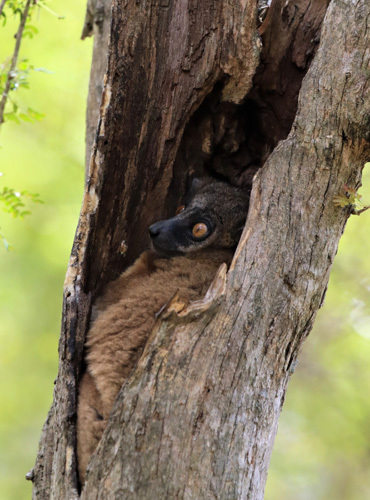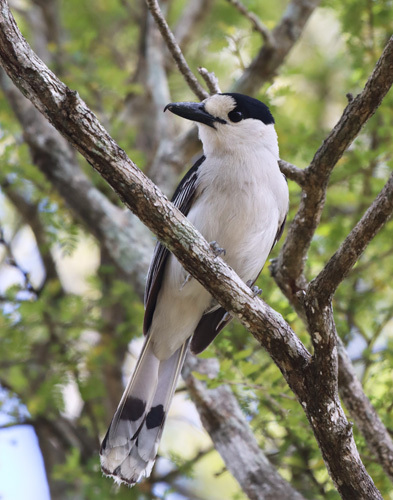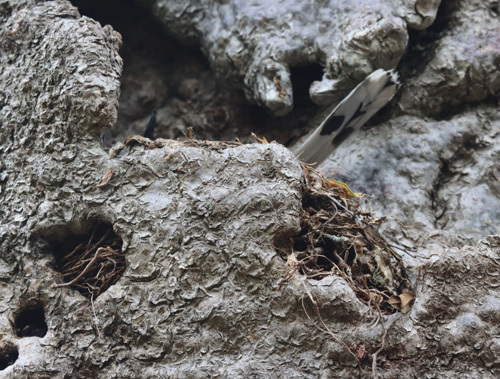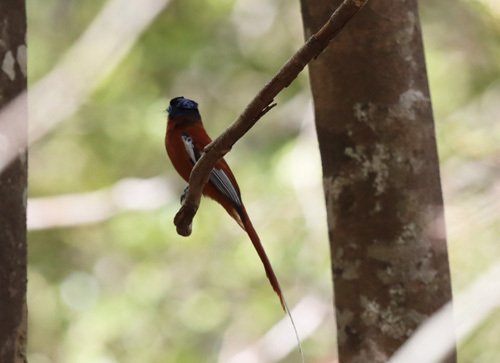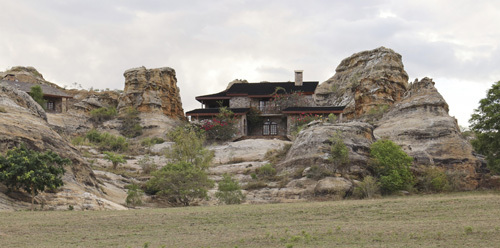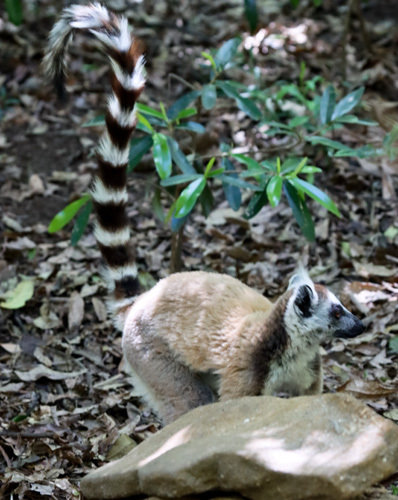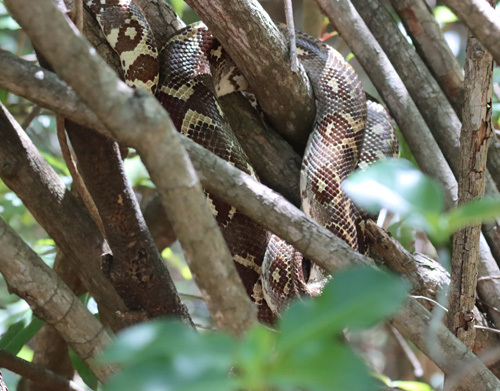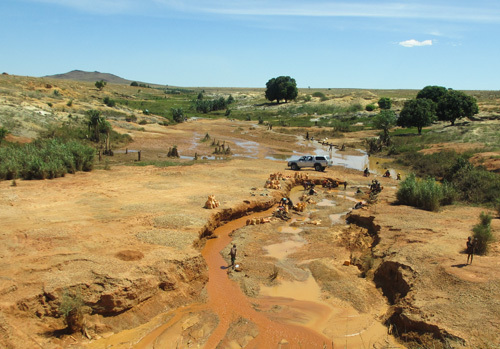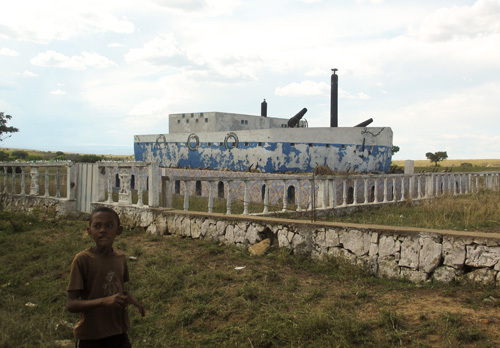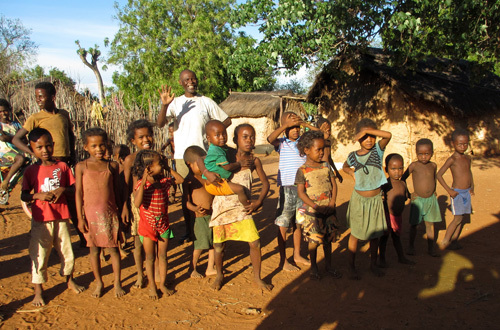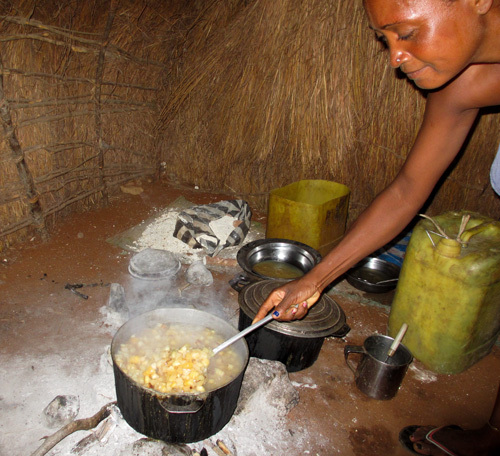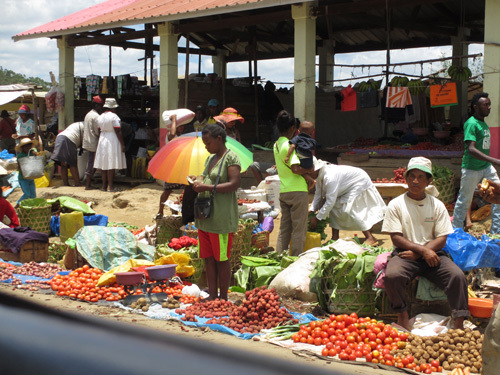I signed on with Caribbean Conservation Trust for a 10-day bird survey in Cuba, followed by a day in historic Havana. My son-in-law Adam and I joined 7 other survey participants on the Southwest flight from Fort Lauderdale to Havana on January 9th. Our itinerary covered central and western Cuba where we found most of the possible endemic species. Our objective was to enhance the scientific information relating to the numbers and distribution of birds in Cuba in order to facilitate their survival in an increasingly problematic environment.
My personal and specific objective was to see one of the two species of the Endemic Cuban Warbler Family: either a Yellow-headed Warbler or an Oriente Warbler. We succeeded in finding both.
As a secondary objective, I also hoped to see the smallest bird in the world. That was achieved when we were able to observe this Bee Hummingbird at the feeders at a private home.
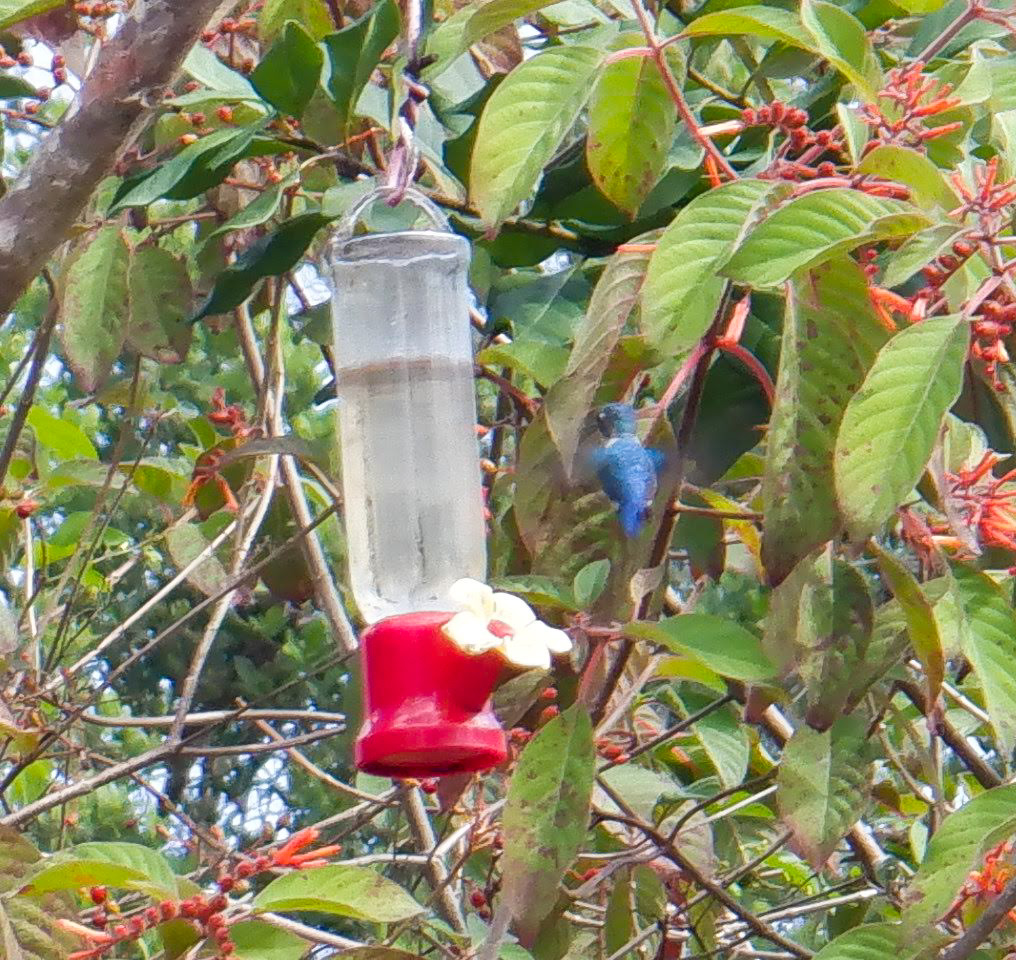
Well, now that I started with the punch lines, I will write in a little more detail about Cuba and the tour.
Cuba is our closest neighbor in the Caribbean. It lies within 100 miles of Florida. The flight from Fort Lauderdale to Havana is less than an hour. American and Southwest airlines, and probably others, fly between Fort Lauderdale and Havana on a regular basis. Notwithstanding the Trump administration “restrictions” it is still legal (and not especially difficult) for United States citizens to visit Cuba. But because of the (intended) fear and uncertainty created by the “new” restrictions and sanctions, visitors from the U.S. are currently many fewer than they have been in recent years, causing considerable privation among the Cuban entrepreneurs and workers who have developed and depended on tourism for their livelihoods. U.S. fear and sanctions are hurting Cubans. And now, the Corona Virus.
Cuba is a little over 700 miles long and about 120 miles wide at its widest point. It is the largest island in the Caribbean. It has about 11,000,000 inhabitants. The second largest Caribbean island is Hispaniola, which is divided between Haiti and Dominican Republic, each with about 11,000,000 inhabitants. These 3 countries account for 75% of the population of the Caribbean. There are many other islands in the Cariibbean, some independent and some owned by other countries. The ones with over 1,000,000 inhabitants are Jamaica with 3,000,000, Puerto Rico (a U.S. possession) 3,000,000, and Trinidad and Tobago, 1,500,000. Some of the independent countries are surprisingly small and sparsely populated. All in all, there are over 700 islands, and 11 independent countries.
While there, a Cuban summarized the accomplishments of the Cuban Socialist Revolution since 1959 as follows: excellent education system, excellent medical system, excellent sports events and participation; but not much to eat for breakfast, lunch or dinner. Food is rationed. Here is a “store” where people go to get their basic foods on a weekly basis.
For car afficionados, it is a mecca for observing vintage autos, often brightly painted, which are on display everywhere, and used as every-day operating vehicles.
We spent a lot of time driving through the countryside. The land is beautiful, with low lying mountains, valleys and green pastures dotted with trees. There is much pastureland. There are cattle, horses, pigs, chickens and goats. There are fields of sugar cane, tobacco, bananas, tomatoes, and other fruits and vegetables.
The history of Cuba is fascinating. One of the most interesting books I read before my trip is Havana Nocturne, which well and entertainingly describes the situation in Cuba as it existed and changed in the 1930s, 1940s and 1950s, up to the ouster of the Batista government by the Castro led Socialist Revolution on January 1, 1959. I recommend it as necessary background for understanding present-day Cuba and the relationship between Cuba and the United States.
We were surprised that we did not need malaria pills for this trip. Malaria has long been extinguished on this island. We felt very safe wherever we went, in the country-side or in the cities.
We arrived in Havana on the 9th and drove directly to Vinales, to the west. We arrived too late to do any birding, and stayed there for nights 1 and 2 with night 2 following our Day 1 of actual birding. This area produced for me Yellow-headed Warblers, fulfilling my primary objective of the trip, as one of the 2 species in the endemic Cuban Warbler family. We also had a brief in-flight view of Gundlach’s Hawk.
Also seen in the area (or on the drive to the Zapata area) were the endemic Cuban Blackbird and the following West Indian Endemics residing in Cuba, or Cuban subspecies: Great Lizard Cuckoo, Antillean Palm Swift, Cuban Emerald, West Indian Woodpecker, Stygian Owl, American Kestrels, Cuban Peewee, Loggerhead Kingbirds, Red-legged Thrush, Cuban Bullfinches, Western Spindalis, Tawny-shouldered Blackbirds, Eastern Meadowlark (hypocreppis), and Greater Antillean Grackles.
Here is the Stygian Owl, one of a pair seen.
From Vinales we went east to the south coast town of Playa Larga for nights 3 and 4. I was unable to participate in Day 3 of Birding because I became ill during the preceding night, suspicious of food poisoning, and missed the day. Adam was able to get a picture of Blue-Headed Quail Doves.
The rest of the group also saw several Endemic Species most of which I was able to see before or after that day, except for the Blue-headed Quail Dove and the Gray-fronted Quail Dove (which our guide Nils does not believe is deserving of species status separate from the Hispaniolan Gray-headed Quail Dove, which I have seen there).
A boat tour of the Zapata Swamp on Birding Day 4 was a highlight the trip, with Zapata Wrens and Zapata Sparrows showing well; but, like everyone else, we did not see the Zapata Rail.
I also saw the following Endemics on Day 4: Bare-legged Owl, Greater Antillean (Cuban) Nightjar, Bee Hummingbird, Cuban Green Woodpecker, Cuban Parakeet, and Cuban Oriole.
Day 5 was spent on the road north across to the northern coast, to Cayo Coco (“Key” Coco). The ride was long. It terminated with a drive across a 35-mile causeway built on the shallow seabed between the coast of Cuba and the northern keys. There we lived in luxury for 2 nights at a plush tourist hotel with lots of international guests. A big pool, all-inclusive meals and drinks, a room above the water, evening live music, and other amenities enhanced the birding experience.
The most notable new Endemics added to my personal count during our stay at Cayo Coco or on the drive back to Havana via Sancta Spiritus (where we spent the night), Trinidad and Cienfuegos were: Cuban Black Hawk, Cuban Tody, Cuban Gnatcatcher, and Oriente Warbler, the second species of the new Cuban Warbler family.
In Havana we stayed at a unique, small hotel (about 10 rooms) converted by German investors from an Oldtown residence to a hotel. It was ideal as a base for our day-tour of Havana. Among the highlights of the day tour were these.
Several of our group in front of the Fidel Castro mural on an administrative building in Revolution Square
Also at Revolution Square is the Jose Marti Memorial, at 358 feet in height, the largest memorial in the world in honor of a writer. Long planned, and much delayed, it was finished in 1958 in the final days of the Batista regime. Governments of Cuba whether pre-revolution or post-revolution, deem it important to honor Marti. From Encyclopedia Britannica:
“Jose Marti, born January 28, 1853, Havana, Cuba—died May 19, 1895, Dos Rios. Poet and essayist, patriot and martyr, who became a symbol of Cuba’s struggle for independence from Spain. His dedication to the goal of Cuban freedom made his name a synonym for liberty throughout Latin America. As a patriot, Marti organized and unified the movement for Cuban independence and died on the battlefield fighting for it. As a writer he was distinguished for his personal prose and deceptively simple, sincere verse on themes of a free and united America.”
Jose Marti Memorial, Adam in foreground
The fight for independence from Spain began in the 1870s and ended in 1898 when the United States, after the sinking of the Maine in Havana Harbor, went to war with Spain and drove it from Cuba.
The 29 new species I saw in Cuba brings to 3,825 my total species seen. Adding the Cuban Warblers to my family list brings it to 223 out of 248. That leaves only the Sapayoa as my single Western Hemisphere unseen family. When the Corona Virus is conquered, I may still see the Sapayoa in Ecuador or Panama.

